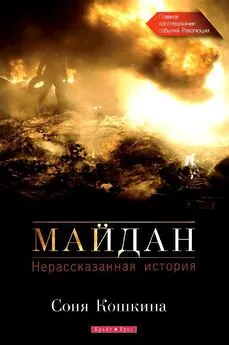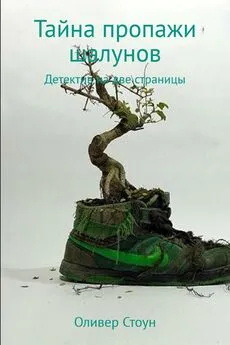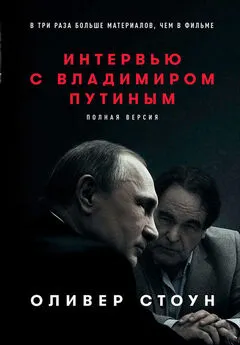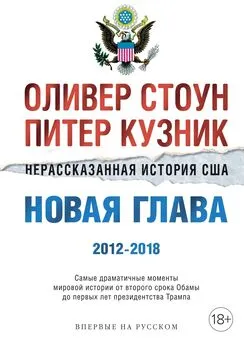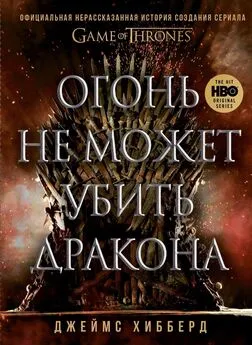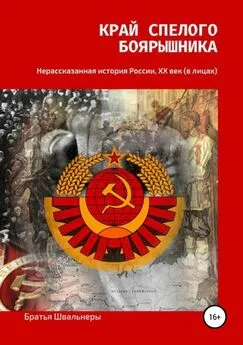Оливер Стоун - Нерассказанная история США
- Название:Нерассказанная история США
- Автор:
- Жанр:
- Издательство:Array Литагент «Аттикус»
- Год:2014
- Город:М.
- ISBN:978-5-389-08903-7
- Рейтинг:
- Избранное:Добавить в избранное
-
Отзывы:
-
Ваша оценка:
Оливер Стоун - Нерассказанная история США краткое содержание
Почему наша страна размещает во всех уголках земного шара свои военные базы, общее количество которых, по некоторым подсчетам, перевалило за тысячу? Почему США тратят на свои вооруженные силы больше денег, чем все остальные страны, вместе взятые? Почему наше государство по-прежнему содержит огромный арсенал ядерного оружия, большая часть которого находится в постоянной боевой готовности, хотя, по сути, ни одна страна сегодня не представляет для нас непосредственной угрозы?
Почему ничтожному меньшинству состоятельных американцев позволено оказывать такое мощное влияние на внутреннюю и внешнюю политику США и СМИ, в то время как широкие народные массы страдают от снижения уровня жизни, а их голос в политике слышен все слабее? Почему американцы вынуждены мириться с постоянным надзором, вмешательством государства в их личные дела, попранием гражданских свобод и утратой права на частную жизнь?
Это повергло бы в ужас отцов-основателей и прежние поколения американцев. Почему в нашей стране именно те, кем движет жадность и узколобый эгоизм, правят теми, кто ратует за такие общественные ценности, как доброта, щедрость, сочувствие к окружающим, общность интересов и верность общенародным идеалам?
И это лишь малая толика тех вопросов, которые мы зададим на страницах этой книги. И хотя мы не надеемся, что сумеем найти ответы на все из них, мы все же постараемся представить исторические факты так, чтобы читатели смогли самостоятельно углубиться в изучение заинтересовавших их вопросов.
В истории Американской империи мало хорошего. Но необходимо честно и открыто говорить о ней, если мы хотим, чтобы Соединенные Штаты когда-нибудь отважились пойти на коренные реформы, которые позволят им играть ведущую роль в продвижении человечества вперед, вместо того чтобы всячески тормозить его прогресс.
Оливер Стоун, Питер Кузник Буктрейлер к этой книге
Нерассказанная история США - читать онлайн бесплатно ознакомительный отрывок
Интервал:
Закладка:
58. Kennedy David M. Over Here: The First World War and American Society. – NY: Oxford University Press, 1992. – P. 133; Axelrod Alan. Selling the Great War: The Making of American Propaganda. NY: Palgrave Macmillan, 2009. – P. 181–182.
59. Painter Nell Irvin: Standing at Armageddon: The United States, 1877–1919. – NY: W. W. Norton, 1987. – P. 335.
60. Stamping Out Treason // Washington Post. – 1918. – April 12.
61. Zinn Howard. A People’s History of the United States. – NY: Harper Colophon, 1980. – P. 355–356.
62. Painter Nell Irvin: Standing at Armageddon: The United States, 1877–1919. – NY: W. W. Norton, 1987. – P. 336.
63. D’Emilio John, Freedman Estelle B. Intimate Matters: A History of Sexuality in America. – Chicago: University of Chicago Press, 1998. – P. 212–213.
64. Meil Hobson Barbara. Uneasy Virtue: The Politics of Prostitution and the American Reform Tradition. – C: University of Chicago Press, 1990. – P. 169, 176–177; Connelly Mark Thomas. The Response to Prostitution in the Progressive Era. – Chapel Hill: University of North Carolina Press, 1980. – P. 143–145.
65. Brandt Allan M. No Magic Bullet: A Social History of Venereal Disease in the United States Since 1880. – NY: Oxford University Press, 1987. – P. 59–60, 101; Connelly Mark Thomas. The Response to Prostitution in the Progressive Era. – Chapel Hill: University of North Carolina Press, 1980. – P. 140; Kennedy David M. Over Here: The First World War and American Society. – NY: Oxford University Press, 1992. – P. 186.
66. Brandt Allan M. No Magic Bullet: A Social History of Venereal Disease in the United States Since 1880. – NY: Oxford University Press, 1987. – P. 101–106; Kennedy David M. Over Here: The First World War and American Society. – NY: Oxford University Press, 1992. – P. 186–187.
67. Brandt Allan M. No Magic Bullet: A Social History of Venereal Disease in the United States Since 1880. – NY: Oxford University Press, 1987. – P. 116–119.
68. Randolph Bourne. Unfinished Fragment on the State // Untimely Papers / Ed. J. Oppenheim. – New York: B. W. Huebsch, 1919. – P. 145.
69. Tucker Jonathan B. War of Nerves: Chemical Warfare from World War I to Al-Oaeda. – NY: Pantheon Books, 2006. – P. 10.
70. Miles Wyndham D. The Idea of Chemical Warfare in Modern Times // Journal of the History of Ideas. – № 31. – 1970. – P. 300–303.
71. “Declaration (IV, 2) Concerning Asphyxiating Gases”, Document 3. В кн.: Adam Roberts and Richard Guelff, ed. Documents on the Laws of War, 3rd ed. (New York: Oxford University Press, 2000), 60.
72. Crazed by Gas Bombs // Washington Post. – 1915. – April 26.
73. New and Peculiar Military Cruelties Which Arise to Characterize Every War // Washington Post. – 1915. – May 30.
74. Topics of the Times // New York Times. – 1915. – May 8.
75. Hershberg James. James B. Conant: Harvard to Hiroshima and the Making of the Nuclear Age. – NY: Alfred A. Knopf, 1993. – P. 44.
76. David Jerome Rhees, The Chemists’ Crusade: The Rise of an Industrial Science in Modern America, 1907–1922, PhD Thesis, University of Pennsylvania, 1987, 169; Hershberg James. Op. cit. – P. 45–49.
77. Hershberg James. Op. cit. – P. 42.
78. Tyner James A. Military Legacies: A World Made by War. – NY: Routledge, 2010. – P. 98–99.
79. Millikan Robert A. The New Opportunities in Science // Science. – № 50. – 1919. – P. 292.
80. Moreno John D. Undue Risk: Secret State Experiments on Humans. – NY: Routledge, 2001. – P. 38–39; Andy Sagar, ‘Secret, Deadly Research’: Camp AU Scene of World War Training Trenches, Drill Field // Eagle, American University, January 15,1965.
81. Sagar, ‘Secret, Deadly Research’.
82. Moreno John D. Undue Risk: Secret State Experiments on Humans. – NY: Routledge, 2001. – P. 38–39; Sagar, ‘Secret, Deadly Research’.
83. Martin K. Gordon, Barry R. Sude, Ruth Ann Overbeck, and Charles Hendricks, “A Brief History of the American University Experiment Station and U. S. Navy Bomb Disposal School, American University”, Office of History, U. S. Army Corps of Engineers, June 1994, 12.
84. Hershberg James. James B. Conant: Harvard to Hiroshima and the Making of the Nuclear Age. – NY: Alfred A. Knopf, 1993. – P. 46–47.
85. Barry Richard. America’s Most Terrible Weapon: The Greatest Poison Gas Plant in the World Ready for Action When the War Ended // Current History. – № 125. – 1919. – P. 127.
86. Harris Robert, Paxman Jeremy. A Higher Form of Killing: The Secret History of Chemical and Biological Warfare. – NY: Random House, 2002. – P. 35.
87. Barry Richard. America’s Most Terrible Weapon: The Greatest Poison Gas Plant in the World Ready for Action When the War Ended // Current History. – № 125. – 1919. – P. 127–128.
88. Jenkins Dominick. The Final Frontier: America, Science, and Terror. – L.: Verso, 2002. – P. 38.
89. Tucker Jonathan B. War of Nerves: Chemical Warfare from World War I to Al-Qaeda. – NY: Pantheon Books, 2006. – P. 19–20.
90. Barry Richard. America’s Most Terrible Weapon: The Greatest Poison Gas Plant in the World Ready for Action When the War Ended // Current History. – № 125. – 1919. – P. 128.
91. Tanaka Yuki. British ‘Humane Bombing’ in Iraq During the Interwar Era // Bombing Civilians: A Twentieth-Century History / Ed. Yuki Tanaka and Marilyn B. Young. – NY: New Press, 2009. – P. 8, 11.
92. Encyclopedia of World War I: A Political, Social and Military History / Ed. Spencer Tucker. – Santa Barbara, CA: ABC–CLIO, 2005. – P. 57.
93. Tanaka Yuki. British ‘Humane Bombing’ in Iraq. – P. 13–29.
94. Jenkins Dominick. The Final Frontier: America, Science, and Terror. – L.: Verso, 2002. – P. 2–3.
95. Jenkins Dominick. The Final Frontier: America, Science, and Terror. – L.: Verso, 2002. – P. 2–3.
96. Irwin Will. “The Next War”: An Appeal to Common Sense. – NY: E. P. Dutton & Co., 1921. – P. 37–38.
97. The Chemical Industry Show // New York Times. – 1917. – September 26.
98. Jones Daniel P. American Chemists and the Geneva Protocol // Isis. – 1980. – № 3. – P. 432, 438.
99. Jones Daniel P. American Chemists and the Geneva Protocol // Isis. – № 3. – 1980. – P. 432, 438; Tucker Jonathan B. War of Nerves: Chemical Warfare from World War I to Al-Qaeda. – NY: Pantheon Books, 2006. – P. 21–22.
100. Tucker Jonathan B. War of Nerves: Chemical Warfare from World War I to Al-Qaeda. – NY: Pantheon Books, 2006. – P. 20.
101. Gardner Lloyd C., LaFeber Walter F., McCormick Thomas J. Creation of the American Empire. Vol. 2: U. S. Diplomatic History Since 1893. – Chicago: Rand McNally, 1976. – P. 336.
102. President Wilson’s Message to Congress on War Aims // Washington Post. – 1918. – January 9.
103. Gardner Lloyd C., LaFeber Walter F., McCormick Thomas J. Creation of the American Empire. Vol. 2: U. S. Diplomatic History Since 1893. – Chicago: Rand McNally, 1976. – P. 343.
104. Gardner Lloyd C., LaFeber Walter F., McCormick Thomas J. Creation of the American Empire. Vol. 2: U. S. Diplomatic History Since 1893. – Chicago: Rand McNally, 1976. – P. 343; Herring George C. From Colony to Superpower: U. S. Foreign Relations Since 1776. – NY: Oxford University Press, 2008. – P. 423.
105. Johnson Robert David, The Peace Progressives and American Foreign Relations. – Cambridge, MA: Harvard University Press, 1995. – P. 82–83.
106. Our Men in Russia at Foch’s Demand // New York Times. – 1919. – January 10.
107. Johnson Robert David, The Peace Progressives and American Foreign Relations. – Cambridge, MA: Harvard University Press, 1995. – P. 84, 320. (Table A.1, “Votes on Anti-imperialist Issues”, Section J).
108. Wells H. G. The Shape of Things to Come. – NY: Macmillan, 1933. – P. 82.
109. Kagan Donald. On the Origins of War: And the Preservation of Peace. – NY: Doubleday, 1995. – P. 285.
110. LaFeber Walter. The American Age: United States Foreign Policy at Home and Abroad Since 1750. – NY: W. W. Norton, 1989. – P. 297.
111. Ibid. – P. 299.
112. Ibid.
113. Wilson Woodrow. Essential Writings and Speeches of the Scholar-President/ Ed. Mario DiNunzio. – NY: New York University Press, 2006. – P. 36.
114. Boller Paul F., Jr., Presidential Anecdotes. – NY: Oxford University Press, 1981. – P. 220.
115. Gardner Lloyd C., LaFeber Walter F., McCormick Thomas J. Creation of the American Empire. Vol. 2: U. S. Diplomatic History Since 1893. – Chicago: Rand McNally, 1976. – P. 340–341.
116. Herring George C. From Colony to Superpower: U. S. Foreign Relations Since 1776. – NY: Oxford University Press, 2008. – P. 418, 426.
117. Gardner Lloyd C., LaFeber Walter F., McCormick Thomas J. Creation of the American Empire. Vol. 2: U. S. Diplomatic History Since 1893. – Chicago: Rand McNally, 1976. – P. 341.
118. Knock Thomas J. To End All Wars: Woodrow Wilson and the Quest for a New World Order. – NY: Oxford University Press, 1992. – P. 223–224, 329, note 76.
119. Boller Paul F., Jr., Presidential Anecdotes. – NY: Oxford University Press, 1981. – P. 220–221.
120. Keynes John Maynard. The Economic Consequences of the Peace. – NY: Harcourt, Brace and Howe, 1920. – P. 36–37, 268.
121. Gaddis John Lewis. Russia, The Soviet Union, and the United States: An Interpretive History. – New York: Alfred A. Knopf, 1978. – P. 77; Thompson John M. Russia, Bolshevism, and the Versailles Peace. – Princeton, NJ: Princeton University Press, 1966. – P. 2; Herring George C. From Colony to Superpower: U. S. Foreign Relations Since 1776. – NY: Oxford University Press, 2008. – P. 422.
122. Gardner Lloyd C. Wilson and Revolutions: 1913–1921. – NY: J. B. Lippincott, 1976. – P. 341–342.
123. Там же. – P. 338–339.
124. Murray Robert K. Red Scare: A Study in National Hysteria, 1919–1920. – NY: McGraw-Hill, 1955. – P. 124–129.
125. Jeremy Brecher, Strike! (1972; reprint, Boston: South End Press, 1977), 126.
126. Olmsted Kathryn S. Real Enemies: Conspiracy Theories and American Democracy, World War I to 9/11. – NY: Oxford University Press, 2009. – P. 19.
127. 66th Congress, 1st Session, Senate Documents: Addresses of President Wilson, 11, 120 (May-November 1919), 206.
128. Ashby Leroy. The Spearless Leader: Senator Borah and the Progressive Movement in the 1920’s. – Urbana: University of Illinois Press, 1972. – P. 101.
129. Herring George C. From Colony to Superpower: U. S. Foreign Relations Since 1776. – NY: Oxford University Press, 2008. – P. 429.
130. Knock Thomas J. To End All Wars: Woodrow Wilson and the Quest for a New World Order. – NY: Oxford University Press, 1992. – P. 186.
131. Chernow Ron. The House of Morgan: An American Banking Dynasty and the Rise of Modern Finance. – NY: Simon & Schuster, 1990. – P. 206–208.
132. Marks Sally. The Illusion of Peace: International Relations in Europe, 1918–1933. – NY: St. Martin’s Press, 1976. – P. 13, 38–39.
133. Schmitz David F. Thank God They’re on Our Side: The United States and RightWing Dictatorships, 1921–1965. – Chapel Hill: University of North Carolina Press, 1999. – P. 31–45.
134. Yergin Daniel. The Prize: The Epic Quest for Oil, Money, and Power. – NY: Simon & Schuster, 1991. – P. 176–183.
Читать дальшеИнтервал:
Закладка:



